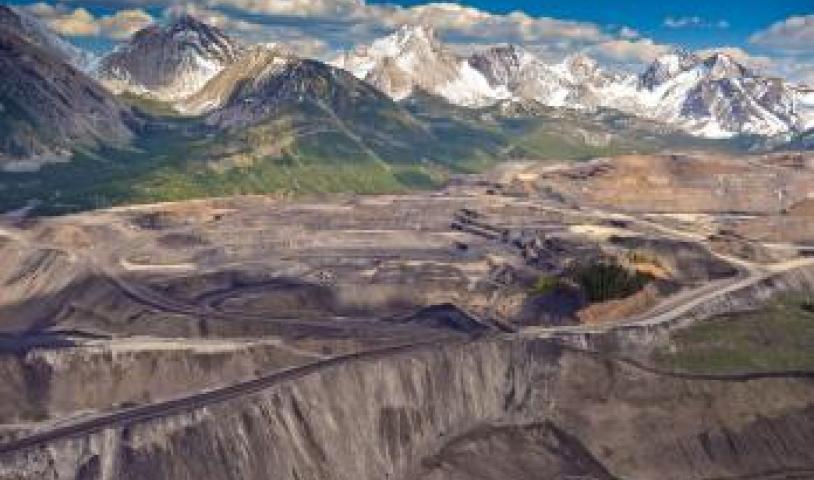Write Now to Stop proposed expansion to Line Creek Coal Mine in the Kootenays
Thursday, April 8, 2010
The once beautiful Elk Valley in the Kootenays is home to the world’s second largest production of metallurgical coal. Five huge open pit mines cut into this once fertile valley.
The Elk Valley is situated in an important area for wildlife. This area is home to one of the largest populations of bighorn sheep in North America, and is home to Mountain goat, elk, deer, moose, bear and cougars, as well as pileated woodpeckers, Stellar’s jays and songbird of all types. The area is also home to the rare calypso orchid, and many beautiful wildflower species. The sensitive flora and fauna of the region have been put under stress by five existing open pit mines, and new plans to expand one of the mines will eat up more valuable habitat.
The Line Creek Coal Mine, located 20 km northeast of Sparwood, currently producing 3.5 million tonnes of coal each year and has enough reserves to last for another ten at current production rates. But that isn’t enough for mining giant Teck Coal. This company has proposed expansions to the coalmine that will rip open 1,800 ha of land to produce 52 millions tonnes of coal over 20 years.
Coal is one of the dirtiest fossil fuels, and has significant impacts on human health through out its lifecycle. When coal is mined, transported or crushed, coal dust is formed. This coal dust is a major air pollutant in areas near mines, shipping terminals and coal generators. When inhaled, it can lead to black lung disease, asthma and other lung problems. People living next to coal production have higher risk of contracting cardiopulmonary disease, hypertension, lung disease, and kidney disease.
This expansion will have irreversible impacts on the Elk Valley, and will cement BC’s place as a dirty fuel super power. It will have a negative impact on wildlife, on human health and will contribute significant to global warming pollution.
This project is currently in the public comment phase of the Environmental Assessment process. We have until April 14th to tell the EA Office NO way to New Coal. Make your voice heard on this pressing issue and write in to the environmental assessment process!
You can submit you comments here.
Some point to consider
The Elk Valley is situated in an important area for wildlife. This area is home to one of the largest populations of bighorn sheep in North America, and is home to Mountain goat, elk, deer, moose, bear and cougars, as well as pileated woodpeckers, Stellar’s jays and songbird of all types. The area is also home to the rare calypso orchid, and many beautiful wildflower species. The sensitive flora and fauna of the region have been put under stress by five existing open pit mines, and new plans to expand one of the mines will eat up more valuable habitat.
The Line Creek Coal Mine, located 20 km northeast of Sparwood, currently producing 3.5 million tonnes of coal each year and has enough reserves to last for another ten at current production rates. But that isn’t enough for mining giant Teck Coal. This company has proposed expansions to the coalmine that will rip open 1,800 ha of land to produce 52 millions tonnes of coal over 20 years.
Coal is one of the dirtiest fossil fuels, and has significant impacts on human health through out its lifecycle. When coal is mined, transported or crushed, coal dust is formed. This coal dust is a major air pollutant in areas near mines, shipping terminals and coal generators. When inhaled, it can lead to black lung disease, asthma and other lung problems. People living next to coal production have higher risk of contracting cardiopulmonary disease, hypertension, lung disease, and kidney disease.
This expansion will have irreversible impacts on the Elk Valley, and will cement BC’s place as a dirty fuel super power. It will have a negative impact on wildlife, on human health and will contribute significant to global warming pollution.
This project is currently in the public comment phase of the Environmental Assessment process. We have until April 14th to tell the EA Office NO way to New Coal. Make your voice heard on this pressing issue and write in to the environmental assessment process!
You can submit you comments here.
Some point to consider
- This project will contribute significantly to global warming. Over 20 years, the coal mined at this site will be burned to add over 180 million tonnes of carbon dioxide into the atmosphere – and that number doesn’t take into account emissions from mining or transportation.
- This beautiful valley is home to bighorn sheep, courgars, bears, elk and mountain goat. This project will rip apart 1,800 hectares of wildlife habitat .This land also represents important areas for local recreation.
- Coal is a dirty, outdated fos- sil fuel. Both the mining and burning of coal have significant human health consequences, including leading to asthma, black lung, liver problems and heart problems.
- Once coal is extracted, it is then washed and treated, resulting in waste water called coal sludge—a mix of water, coal dust, clay and toxic chemicals such as arsenic, mercury, lead, copper, selenium and chromium. This leads to pollution of ground water.
